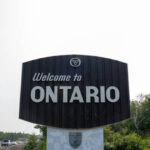
There are more than 100 immigration programs in Canada! If you have been following all the FREE resources I have been sharing for some time, you have probably heard this from me before!
These programs have specific requirements, and procedures to follow. That’s why the thing to do when you are interested in moving to Canada is to take these 3 steps:
- Check the program requirements of the program(s) you are interested in (to be sure you are eligible or can improve your profile to be eligible)
- Know the financial resources and cost associated with the application route you have chosen (and prepare for that)
- Gather your documents, follow the due process, and apply!
This post is to guide you on the programs/pathways to focus your attention on. So, do additional research or speak to professionals (if needed) before you proceed. This is important!
Since the COVID-19 pandemic started, and the delay/backlogs in Canadian immigration that came with that, many foreign nationals have made the decision to go to the USA, UK, and other countries to study or work. But many of them still have their eyes on moving to Canada for many reasons.
Many people living in other countries are also now rekindling their interests to come to Canada. The backlogs are getting cleared and applications are getting processed faster than before.
If you want to move to Canada and don’t know how to do so, or you don’t know the Visa route to choose, this is for you. These are some of the ways to still move to Canada from any country you are currently living in:
1) The Express Entry Program
In 2015, Canada started the Express Entry system to process permanent residence applications for SKILLED workers who want to settle in Canada permanently. Every year, thousands of candidates are invited through any of the three(3) sub-categories of the Express Entry System to become permanent residents in Canada.
Express Entry is the most popular program for permanent residence applications in Canada because it doesn’t require you to compulsorily have a job offer in Canada. The work experience from your home country, work experience as a student in your current country, or work experience after your study in your current country can all be used to apply for permanent residence through Express Entry.
I have written extensively about this in the past, and now that the draws are back, it’s a good time to start preparing for the program. The previous comprehensive posts I made on the program are available at:
The cutoff of the first draw on July 6, 2022 was understandably high. It was the first draw in over one year. Now, the draws are consistent, and the cut-off has been dropping steadily. So prepare ahead, get into the pool, and check out other ways to improve your score as outlined in the guide above.
2) Provincial Nomination Programs
Provincial Nominee Programs (PNPs) serve two major purposes.
- You can use them to increase your Express Entry score. If nominated as an Express Entry applicant, it adds 600 extra scores to your Express Entry score.
- You can use them to immigrate to Canada even without having an Express Entry profile. Some provinces have separate nomination routes that are not aligned with Express Entry. And through these, they bring foreign nationals to Canada as permanent residents.
You will find a comprehensive post I made on how to get a Provincial Nomination in Canada here
Fun fact: There are 10 provinces and 3 territories in Canada, and these provinces have different nomination requirements. So, take the time to go through each provincial website in the link above for more information. And find a province you are eligible for their program.
3) Strategic International Recruitment by Provinces
So many Canadian provinces have strategic international recruitment programs to look for global talents across the world. A lot of these events are done in USA, UK, Asia, and Europe. You don’t want to miss out on the opportunities.
With your work experience and education in these other countries, you will fit in perfectly and have the skills required by the provinces/employers. You will find the dedicated websites for some of the recruitment events on the provincial websites. The popular ones I know are:
- New Brunswick Job Connector. Available here
- New Brunswick International Recruitment. Available here
- Saskatchewan International Healthcare Worker pool. Available here
- Quebec International Recruitment. Available here
- Saskatchewan Hard-to-Fill Skills Pilot. Available here
Once you get a job through any of the recruitment programs, you can use that to come to Canada as a worker, and it will place you on the pathway to permanent residency in the province as well.
4) Atlantic Permanent Residence Immigration Program
As I mentioned earlier, the Express Entry program is not the only permanent residence program in Canada.
In 2017, the Government of Canada started the Atlantic Immigrant Pilot Program (AIPP). The AIPP started as an initial 3-year pilot (and has now been made permanent). The program allows local employers in the Atlantic provinces to identify, recruit and retain global talent.
The program also helps employers in Atlantic Canada to hire foreign skilled workers who want to immigrate to Atlantic Canada and international graduates who want to stay in Atlantic Canada after they graduate.
The aim of this is to support population growth, develop a skilled workforce, and increase employment rates in the Atlantic region.
You will find a comprehensive post I made on the Atlantic Immigration program here
The bright spots about the program:
- You need a job offer and can use the job to get a work permit to come to Canada while your permanent residence is being processed.
- The proof of funds for the program is very very low.
- The IELTS requirement for the program is just CLB 4 – 5.
5) The Rural and Northern Immigration Program (RNIP)
Similar to the Atlantic Immigration Program above, the Government of Canada started the RNIP a few years ago.
Those eligible to apply are foreign nationals who have the ability to become economically established and intend to reside in the selected communities that are eligible for the program. Unlike the Atlantic program, the RNIP is for selected 11 communities in different parts of Canada.
You need to get a job offer, a community endorsement, and then apply for permanent residence (or a temporary work permit) with it.
The bright spots about the program:
- The 11 communities have dedicated websites where they advertise jobs and actively attract foreign workers.
- You need a job offer and can use the job to get a work permit to come to Canada while your permanent residence is being processed.
- The proof of funds for the program is very very low.
- The IELTS requirement for the program is just CLB 4 – 5.
To read more about the RNIP process, check the information available on the Government website here
6) Temporary Foreign Worker Program
Canada has a Temporary Foreign Worker (TFW) Program that allows Canadian employers to hire foreign workers to fill temporary and permanent jobs.
This program is regulated through the Immigration and Refugee Protection Act and the Immigration and Refugee Protection Regulations and is administered in partnership with Immigration, Refugees and Citizenship Canada (IRCC) and the Canada Border Services Agency (CBSA).
You will need an employer to offer you a job for this and then process the Labour Market Impact Assessment (LMIA) for you to apply for a work permit. While this is not a permanent residence program, once you arrive in Canada and work for one year, you can use the work experience to apply for permanent residence using the Canadian Experience Class of the Express Entry program.
I explained this in detail in my post on how to get a work visa in Canada here
And you will find the Top 15 websites to look for jobs in Canada here.
7) The Global Talent Stream
This is specifically for applicants who have experience in Tech-related jobs. This Stream is intended for innovative firms in Canada that have a need to hire unique and specialized temporary foreign workers in order to scale-up and grow.
It is also meant for firms in Canada that are seeking to hire highly-skilled foreign workers to fill positions in occupations on the Global Talent Occupations List. The occupations targeted by this program are:
- Computer and information systems managers
- Computer engineers (except software engineers and designers)
- Mathematicians and statisticians
- Information systems analysts and consultants
- Database analysts and data administrators
- Software engineers and designers
- Computer programmers and interactive media developers
- Web designers and developers
- Computer network technicians
- Information systems testing technicians
- Producer, technical, creative and artistic director and project manager – Visual effects and video game
- Digital media designers
You can read more about each occupation and the occupation requirements here.
If you have skills in any of the occupations above, you can look at the Global Talent Stream to come to Canada.
The bright spots about the program:
- The Global Talent Stream applications are processed within 10 business days, 80% of the time.
- You don’t need IELTS
- You can use the work experience from the program to apply for permanent residence in Canada after one year.
To read more about the Global Talent Stream, check the information available on the Government website here
8) Global Skills Strategy (Post-Doctoral Researchers and Academic Hiring) Programs
Special hiring criteria have been developed by Employment and Social Development Canada (ESDC)/Service Canada and Immigration, Refugees and Citizenship Canada (IRCC) in cooperation with universities, degree-granting colleges, and unions representing Canadian academics.
These programs make it possible for Universitis/Colleges to hire Post-Doctoral students from other countries to come to Canada as temporary foreign workers. This is good for students who have completed a PhD in other countries and want to do their Post-Doctoral program in Canada.
Once you get a PostDoc position, you can get a work permit that allows you to come to Canada with your family, and can use the work experience from the position to apply for permanent residence in Canada after one year.
The bright spots about the program:
- The Global Skills Strategy applications are processed within 2 weeks. This is how to get the 2-week processing here.
- You don’t need IELTS
- You can use the work experience from the program to apply for permanent residence in Canada after one year.
9) Study in Canada
No matter the country you currently live in, you can also still apply to study in Canada from anywhere in the world. This is applicable to any level of study
For instance, if you’ve completed a Masters Degree in UK, USA, or other countries, you can come to Canada for a PhD, a second Masters, or any program.
The good thing about studying in Canada is that it makes you eligible for more permanent residence program that those who are not in Canada are not eligible for. I have written extensively about this, and the resources to check are:
- How to find schools and apply to study in Canada. Available here
- How to find scholarships in Canada. Available here
- The 15 schools to focus on for scholarships in Canada. Available here
- The 10 Canadian scholarships you must not miss every year. Available here.
- How to apply for a Canadian study permit by yourself. Available here
Check the resources and do the needful. Coming to study is also one of the fastest route to come to Canada, and you can leverage your previous study to get scholarships to support your study in Canada.
10) Pathways for Caregivers
Canada has dedicated pathways for those who have caregiver experience and want to immigrate to Canada. These pathways are available for both temporary and permanent residence applications.
If you have work experience as a caregiver, these are programs to focus on. You can read more about the Home Care Provider Pilot and the Home Support Worker Pilot here.
You can also use the care worker experience you have (outside Canada) to apply for permanent residence under the Healthcare category of Express Entry if your care worker experience falls under the National Occupation Classification (NOC) 33102. Check the details of this care worker job here.
11) Federal Start-up Program
The Federal Start-up Visa program allows you to immigrate to Canada by starting a business and creating jobs, or support innovative entrepreneurs.
Canada’s Start-up Visa Program targets immigrant entrepreneurs with the skills and potential to build businesses in Canada that:
- are innovative
- can create jobs for Canadians
- can compete on a global scale
Do you have an innovative business idea? If you can get support for your idea from one of the designated organizations, you may be able to immigrate to Canada.
So, if you started a business in the country you are and want to scale globally or move the business to Canada, this is your opportunity to do so and become a permanent resident with this. You can read more about the program here.
12) Provincial Entrepreneur Programs
Just like we have the Federal Start-up Visa program, there are also business/investor programs for business owners or those who want to start businesses in any province in Canada.
I have curated a thread detailing the various requirements for this, and you can read the post here.
The 10 Provinces in Canada have their specific requirements for those who intend to start a business in their province and use that as a pathway to permanent residency. Pay particular attention to the amount of money to invest and the expected net worth you must have.
13) Agri-food Pilot and Agri-worker Program
The Agri-Food Pilot helps address the labour needs of the Canadian agri-food sector.
The pilot provides a pathway to permanent residence for experienced, non-seasonal workers in specific industries and occupations. It will run until May 2025. This extension was recently announced here.
To apply for permanent residence under the Agri-Food Pilot, you need an eligible Canadian work experience of at least one year. And have a job offer for full-time, non-seasonal work in an eligible Agricultural industry.
Eligible industries under the pilot are:
- meat product manufacturing (NAICS 3116)
- greenhouse, nursery and floriculture production, including mushroom production (NAICS 1114)
- animal production, excluding aquaculture
- cattle ranching and farming (NAICS 1121)
- hog and pig farming (NAICS 1122)
- poultry and egg production (NAICS 1123)
- sheep and goat farming (NAICS 1124)
- other animal production (NAICS 1129)
To get the required Canadian work experience, you can initially come to Canada using the Seasonal Agricultural Worker Program (SAWP), which allows employers to hire temporary foreign workers (TFW) when Canadians and permanent residents are not available.
You can also come to Canada through other work permit categories, (open work permit or employer-specific work permit), and will become eligible for the Agri-Food Pilot Program after one year of working in Canada.
You can read more about these Agricultural programs on the Government of Canada website below:
- Agri-Food Pilot Program. Available details here
- Seasonal Agricultural Worker Program (SAWP). Available details here
- Work Permit Program. Available details here
14) Spousal or Family Sponsorship Programs
The good thing about Canada is that the country prioritizes family reunification. And there are various sponsorship programs to reunite with family members both temporarily and permanently in Canada.
If you have a Spouse who is in Canada as a student, you can join them using the spousal open work permit. You don’t need to get a job offer for this, and you can read more about it here.
If your Spouse is in Canada as a Permanent Resident or Citizen, you can join them directly in Canada as a Permanent Resident. You don’t need a job offer, you don’t need work experience, you don’t need IELTS, and you don’t need a degree assessment for this.
Canadian citizens and can sponsor their spouse, partner or dependent children to become permanent residents of Canada. You will find more information about this here.
So if someone in Canada has been entering your eyes, and you are afraid of distance, maybe this is your go ahead to worry no more and go shoot your shot, or accept the shot they have been shooting at you with your chest. Amen? Amen! Lool.
There is also a program that allows Canadian citizens and permanent residents to sponsor their orphaned brother, sister, nephew, niece or grandchild. This is an interesting one that many people do not know about. And you can read about the requirements here.
15) Visitor to Work Permit Policy.
As part of the COVID-19 Emergency Measures, Canada has made it possible for foreign nationals who are visiting the country to apply for jobs as a visitor and apply for a work permit to transition from Visitor to Work Permit without leaving Canada.
If you are able to get a Canadian Visitor Visa (which I will encourage you to apply for or get), you can also use this as a temporary pathway to visit Canada and interact closely with employers on ground, get a job offer, and apply for a work permit.
The public policy came into effect on August 24, 2020, and the eligibility criteria were expanded to allow all visitors who are in Canada with valid temporary resident status to apply inland for an employer-specific work permit, regardless of when they arrived in Canada. The public policy has been extended until February 28, 2025.
You can read more about this on the Government website here.
While the 15 immigration pathways outlined here are just a fraction of the numerous pathways to move to Canada, they are good starting points for those who are interested in relocating to Canada after living, studying, or working in USA, UK, and other countries.
Don’t forget the 3Ps I always tell you about. Moving to a new country takes a lot of deliberate effort. So, you have to plan, follow the due process, and be patient.
I hope someone finds this useful!
If you have questions on Career & Personal Development, Personal Finance, or Building a Personal Brand and want to reach out to us, check what we have here.
DISCLAIMER: The posts and information on this website are not legal advice. We are not Canadian Immigration Consultants and do NOT provide Canadian Immigration Services. For any authorized Canadian Immigration information, services, or support, please check the Government of Canada website at www.canada.ca/immigration
© Olu of Canada





Thank you so much for sharing this information.
I need more information and consultation
Thanks for the valuable information you provided here, it takes great efforts to pull that off, Hats off!!
Well done for this wealth of information. I do appreciate your effort. Thank you so much
Thank you for your explanation
This is good development. Thanks for the information
Wow. This is quite elaborate. Thanks for this and keep up the good work.
Thanks a bunch.
Thanks for this
I am grateful for the programs
I am grateful for the opportunities that you have give me to apply for the scholarship.
Thanks for the content. I hope those whom haven’t worked or school in either of the above countries can still apply regardless. Just like I’ll do !
Which way can you help me to Canada without using English test
Apply to study in Canada